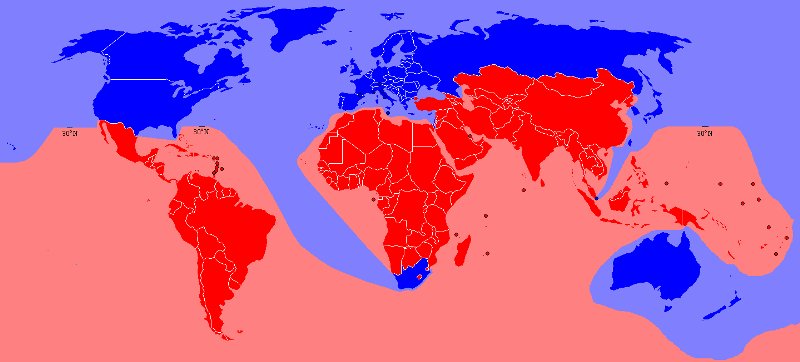Today’s introductory readings from Lewis & Wigen explore, as well as critique, Orientalist cartographic discourses of East vs. West, epistemological object vs. rational mind. In mobilizing the map as not only image but also metaphor, the authors dismantle, while not entirely rejecting, this Cartesian dualism and its Enlightenment assumptions about knowledge and reason. For Lewis & Wigen, the map of East vs. West manifests capitalist development as a paradigmatically European project, framing nations such as Japan (and increasingly, I would add, South Korea) as “Western” by virtue of their wealth alone. This designation 1) exceptionalizes parts of East Asia already imagined as the epicenter of “Asia,” positioning them as models for less developed terrains, and 2) reinforces “dubious definitions of non-Westernness as backwardness” (52). For Lewis & Wigen, “Western” seems to approximate “economically advanced,” implying that the underdeveloped, non-Western world remains immature, childlike, and dependent. The authors intimate as such in their suggestion that “Westernness” has shifted from “a purely spatial to a quasi-temporal category,” framing non-Western areas of the map as progressive and efficient, and non-Western territories as stable, backward, and atavistic.
Moreover, this topographic dualism of East vs. West not only elides Latin America and Africa from Eurocentric imaginations of “over there,” but exposes the gendered imagination of capitalist development itself. I would strengthen the authors’ otherwise compelling critique further by underscoring the masculinization of development as evidence of maturity and progress, rationality and activity. That is, not only does the map of East vs. West reinscribe Cartesian and Orientalist representations in visual culture, but also divides the world by gender: the masculine mind and the feminine body; the masculine penetrator and the feminine unknown; the mature civilizer and the feminized Asian; the progressive developer and the traditional woman. In what other ways can East vs. West maps gender racialized, often (neo)colonized populations?
